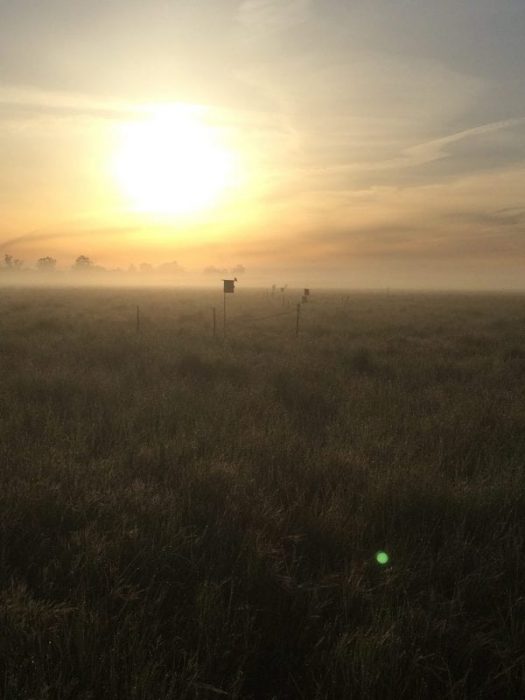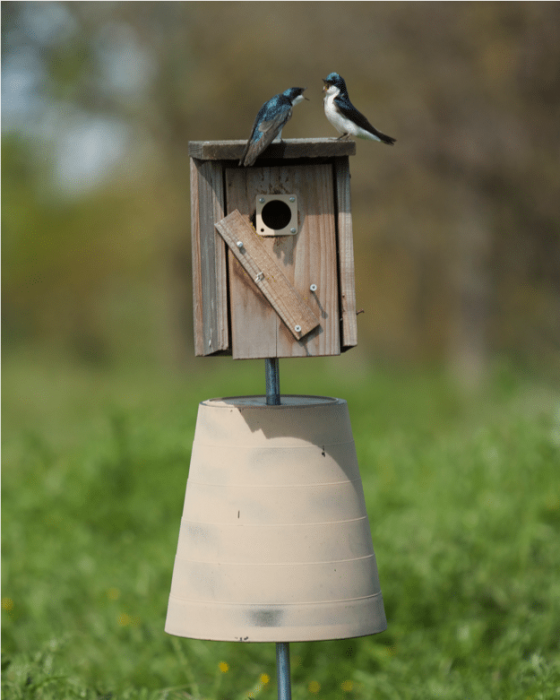
A recent study found that for an overwhelming majority of U.S. Counties (> 90%), transportation noise is audible in at least 50% of the land area. This surprisingly large blanket of noise affects urban, rural, and otherwise undisturbed habitats, as sound can travel far beyond roadways, railways, and runways.
Exposure to transportation noise, such as traffic noise from roadways, can have negative impacts on humans (e.g. increased risk of hypertension), as well as wildlife (e.g. reduced number of offspring and/or offspring with a lower probability of survival). For wildlife species, a reduction in the number and/or quality of offspring could potentially lead to conservation concerns, as population sizes (i.e. the number of individuals living in a region) could diminish.
Foundational studies of traffic noise impacts on wildlife have focused on birds, as the presence of traffic noise may inhibit birds from hearing songs and calls used for mating, maintaining territory boundaries, etc. Indeed, these studies found that some birds in noise-exposed areas alter the frequency (i.e. sing at a higher pitch to be heard over traffic noise) or timing (i.e. sing earlier in the morning to avoid noisy rush hour traffic) of their vocalizations.
More recently, research has begun to investigate the impacts of traffic noise on birds beyond altered vocalizations. For example, studies have found that birds nesting in areas near roads are less efficient at gathering food and lay fewer eggs. These broader studies are necessary to better understand potential conservation issues – both decreased egg-laying and nestling provisioning could reduce local avian population sizes. However, it is often difficult to identify if traffic noise or other factors associated with roads (i.e. light pollution, exhaust/visual disturbance from passing vehicles) are causing the negative consequences. Therefore, studies that use traffic noise recordings in areas that are not near roads are needed to isolate and better understand the effects of noise on avian behavior and reproductive success.
Here, we compared parental feeding behavior, nestling growth, and nestling oxidative stress between tree swallow nests that were exposed (or not) to traffic noise playbacks. Oxidative stress is often measured as the relationship between harmful reactive oxygen metabolites and beneficial antioxidants in one’s bloodstream. If an individual has an imbalance, such that there are more reactive oxygen metabolites than anti-oxidants, oxidative stress would be high and reactive oxygen metabolites can bind to DNA, causing degradation and potentially cell death.
Tree swallows offer a great system to study the impacts of traffic noise in the wild because they nest in man-made nest boxes, which allows the exact placement of the nest, relative to the noise playback speakers, to be controlled. Therefore, we can compare nests that are exposed to known levels of traffic noise recordings and nests are not exposed to these recordings.
We hypothesized that tree swallow nestlings exposed to traffic noise during development would have reduced body size, as compared to unexposed birds, due to decreased parental foraging rate. We also hypothesized that nestlings exposed to traffic noise playbacks would have altered oxidative stress, compared to nestlings not exposed to noise – yet it was difficult to predict whether noise would cause increased or decreased oxidative stress. We may expect oxidative stress to be higher in noise-exposed nestlings because reactive oxygen metabolite concentrations have been found to increase with hormones associated with stress in birds (noise may serve as a stressor to tree swallows). However, oxidative stress has also been found to be negatively related to the rate of metabolism. Since we expect nestlings exposed to traffic noise playbacks to have decreased growth (i.e. higher metabolic rate), it is also possible that noise-exposed nestlings would have decreased oxidative stress levels.
We conducted this experiment at two field sites in Davis, CA that are not near roadways. We played traffic noise recordings through outdoor rock speakers for 6 hours, every other day. We calibrated traffic noise recordings to 60 dBA at the nest box entrance, which is the equivalent of being 70 m from a 2-lane highway. We also used video cameras to record parental feeding behavior during nestling development. Finally, we took mass, feather and skeletal measures from nestlings when they were 4, 8, 10, and 12 days old, while blood samples for oxidative stress measures were taken on day 14.

Picture of the field site in the early morning. Credit: Allison Injaian
Our results supported our hypothesis that traffic noise exposure during development reduces nestling growth: nestlings exposed to traffic noise were smaller in each measure taken, as compared to unexposed nestlings. Interestingly, our data does not show that this decreased nestling growth is due to decreased food intake, as parental feeding behavior was not negatively affected by traffic noise exposure. Instead, decreased nestling growth may be explained by altered levels of hormones associated with stress responses.
If traffic noise exposure serves as a stressor to nestling tree swallows, hormones associated with the stress responses (i.e. corticosterone) could inhibit nestling growth for noise-exposed birds. Similarly, altered corticosterone levels may explain the differences in oxidative stress between nestlings exposed, and not exposed, to traffic noise. Specifically, our oxidative stress results showed that the ratio between reactive oxygen metabolites and antioxidants was higher for noise-exposed nestlings that were born later in the season and for those with fewer siblings.

Tree swallows on a nest box. Credit: Lauren Poon
These results indicate potential long-term consequences of short-term noise exposure, as reduced nestling body size has been found to decrease adult morphology and lifespan in other birds. Overall, our study adds to a growing body of literature showing that noise pollution can negatively impact birds, possibly contributing to population declines and causing conservation concern in some species.
These findings are described in the article entitled Experimental anthropogenic noise impacts avian parental behavior, nestling growth and nestling oxidative stress, recently published journal Animal Behaviour. This work was conducted by Allison Injaian and Gail Patricelli, both from the University of California, Davis, as well as Conor Taff, from the Cornell Lab of Ornithology.









